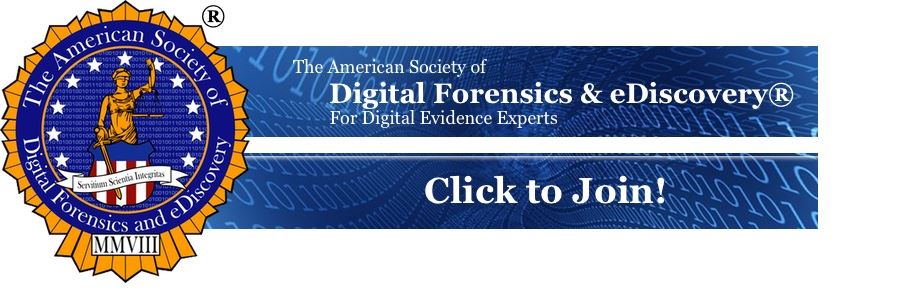-
-
Computer Forensics FAT32 USB Exam
-
Computer Forensics on a FAT32 Formatted USB Thumb DriveComputer forensics involves applying investigative techniques to gather and analyze data from digital devices. A typical digital forensics scenario is the examination of a USB thumb drive. Let's assume it is formatted with the FAT32 file system for this example. FAT32 is a widely used file system due to its compatibility with various operating systems. However, it has a range of limitations, including file and disk size restrictions. This article provides a step-by-step guide on how to perform computer forensics on a FAT32-formatted USB thumb drive. Authorization Before starting the forensic examination, ensure you have the authority to examine the media. Having proper authorization before conducting a forensic exam is crucial for ensuring the integrity and legality of the investigation process. Without consent, the examination could be deemed unlawful, leading to potential violations of state and federal laws such as computer trespass, privacy violations, and other legal issues. This authorization typically comes as a warrant or explicit consent from the data owner, which provides a legal basis for the forensic activities. Such compliance is essential to prevent the evidence from being challenged or dismissed in court. Chain-of-Custody The chain of custody is fundamental in a computer forensics examination to ensure the integrity and authenticity of the evidence. The chain of custody meticulously documents the handling, transfer, and storage of evidence from the moment it is collected until it is presented in court. This documentation is crucial because it demonstrates that the evidence has been maintained securely and unaltered, thereby preserving its reliability. Any gaps or inconsistencies in the chain of custody can lead to questions about the evidence's integrity, potentially resulting in its inadmissibility in court. By maintaining a clear and thorough chain of custody, forensic investigators can provide a transparent and verifiable record of the evidence's history. Equipment Proper equipment is essential to a successful computer forensic examination because it ensures the investigative process's accuracy, efficiency, and integrity. Specialized tools, such as write-blockers, forensic imaging software, and data analysis platforms, are designed to handle digital evidence without altering it, thereby preserving its original state. Using the right equipment minimizes the risk of data corruption or loss. The proper equipment is indispensable for ensuring the investigation is conducted efficiently, accurately, and within legal and ethical standards. Some hardware and software includes: A write-blocker to prevent any changes to the original USB drive. Forensic software such as FTK Imager, Autopsy, or EnCase. A dedicated forensic workstation. Sterile Environment Prepare a clean and controlled environment to avoid contamination of evidence, which includes:
Connect the USB device to a hardware write-blocker A write blocker prevents any modifications to the original storage media during the examination process. When forensic investigators access a storage device, such as a USB thumb drive, even routine operations by the operating system can inadvertently alter the data, compromising the integrity of the evidence. A write blocker ensures the device is only readable, blocking any commands that might change, delete, or add data. This protection is essential for preserving the evidence in its original state, a cornerstone of forensic integrity. Maintaining an unaltered copy of the data is crucial for ensuring accurate and reliable findings. Once verified, attach the USB thumb drive to a write-blocker. Forensic Image Use your forensic software to create a bit-by-bit copy of the USB drive. This image will serve as the basis for all analysis, preserving the original evidence. In FTK Imager, for example, you would:
Verify the Image Integrity To ensure their integrity, calculate and record the hash values (MD5, SHA-1) of the original drive and the image. These hashes should match, confirming that the image replicates the original drive. Mount the Forensic Image Mount the forensic image using your forensic software, which allows you to interact with the file system as if it were the original USB drive. Examine the File Structure Navigate through the FAT32 file system structure, which includes:
Identify Suspicious Files and Directories Look for unusual or suspicious files and directories, which might include: Hidden or system files that shouldn't be there. Files with unusual extensions or names. Recently modified files that seem out of place. Recover Deleted Files FAT32 keeps track of deleted files until the clusters are overwritten. Use forensic tools to recover these files:
Analyze File Metadata Examine the metadata of files to gather information such as:
Check for hidden data within files, such as:
Perform Keyword Searches Run keyword searches to find relevant text within files and unallocated space, which can locate evidence or specific data of interest. Analyzing Artifacts
Steps were taken during the examination. Hash values and verification results. Compile a Report
Conclusion Conducting computer forensics on a FAT32-formatted USB thumb drive involves meticulous preparation, careful imaging, thorough analysis, and detailed reporting. By following these steps, forensic investigators can uncover critical evidence while maintaining the integrity and admissibility of the data. Mastering these techniques is essential for any digital forensics professional, whether for legal proceedings or internal investigations. |
